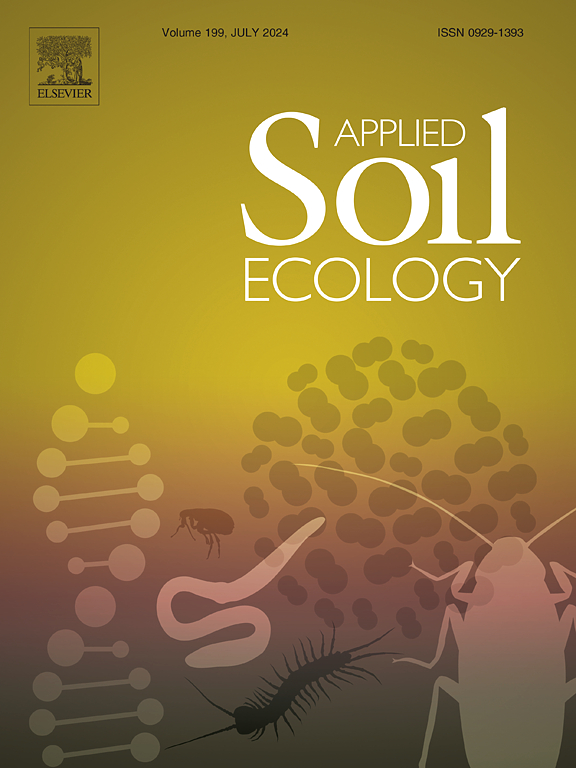Investigation of bioremediation mechanism of nicosulfuron-contaminated soil by highly efficient degrading bacterial consortium YM1: Analysis of degradation genes and microbial community structure
IF 4.8
2区 农林科学
Q1 SOIL SCIENCE
引用次数: 0
Abstract
Microbial degradation is a pivotal approach for mitigating pesticide residues. Nicosulfuron, a widely utilized sulfonylurea herbicide in modern agriculture, poses risks of soil contamination and adverse effects on human health when applied excessively. This study aimed to cultivate bacterial colonies proficient in nicosulfuron degradation to remediate contaminated soils. Through the one-way and response surface optimization techniques, it was determined that a combination of 31.85 g L−1 glucose, 10.58 g L−1 yeast extract, and 9.40 g L−1 sodium chloride could achieve a 97.65 % degradation of nicosulfuron within 4 d. Optimal culture conditions included a temperature of 30 °C, pH of 7.0, nicosulfuron concentration of 50 mg L−1, and 2 % inoculum. Analysis of antioxidant enzyme activity and nicosulfuron degradation gene expression in bacterial consortium YM1 cells revealed their ability to withstand nicosulfuron stress and facilitate degradation. The bacterial consortium YM1 achieved a degradation rate of 95.54 % in nicosulfuron-contaminated soil. Soil diversity analysis indicating that strains N80 and 2 N3 were the dominant bacterial genera in the community, with strains N1 and Mq4 also playing significant roles. These findings suggest mutual promotion of growth among the strains, resilience to external environmental stresses, and enhanced colonization in the soil. The bacterial consortium YM1 not only improved soil biodiversity but also enhanced soil enzyme activity and quality. This demonstrates the promising potential of these bacteria for biodegradation and soil remediation, offering an effective approach for remediating nicosulfuron-contaminated soils.
求助全文
约1分钟内获得全文
求助全文
来源期刊

Applied Soil Ecology
农林科学-土壤科学
CiteScore
9.70
自引率
4.20%
发文量
363
审稿时长
5.3 months
期刊介绍:
Applied Soil Ecology addresses the role of soil organisms and their interactions in relation to: sustainability and productivity, nutrient cycling and other soil processes, the maintenance of soil functions, the impact of human activities on soil ecosystems and bio(techno)logical control of soil-inhabiting pests, diseases and weeds.
 求助内容:
求助内容: 应助结果提醒方式:
应助结果提醒方式:


